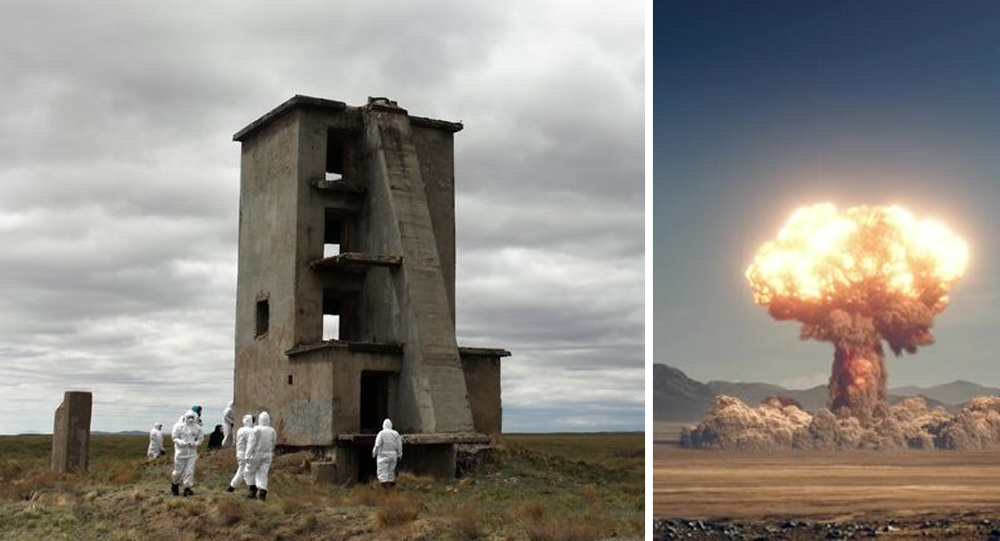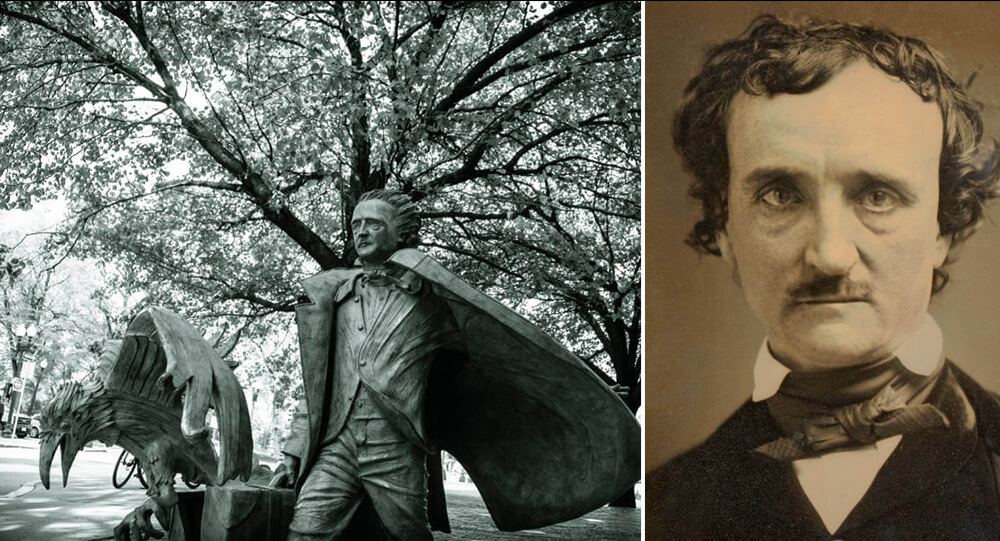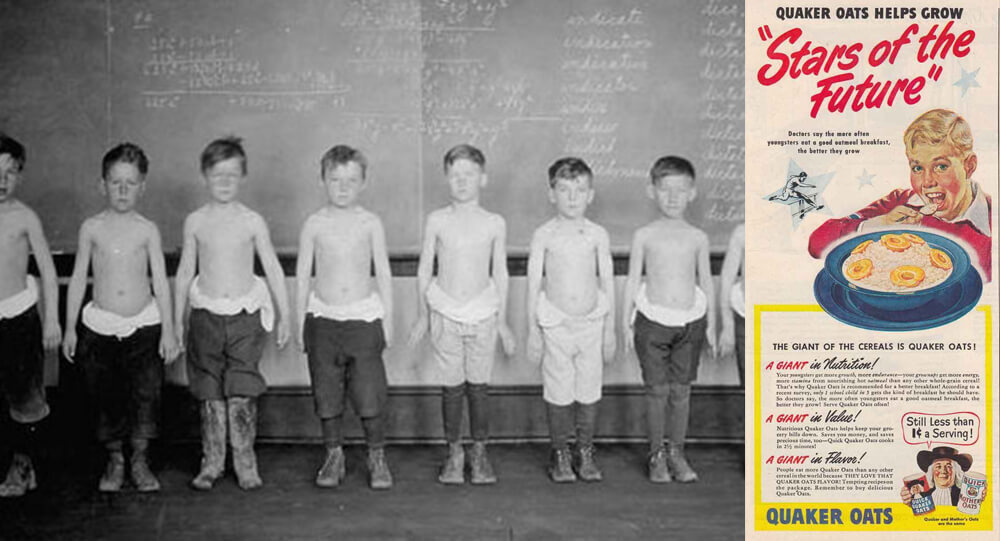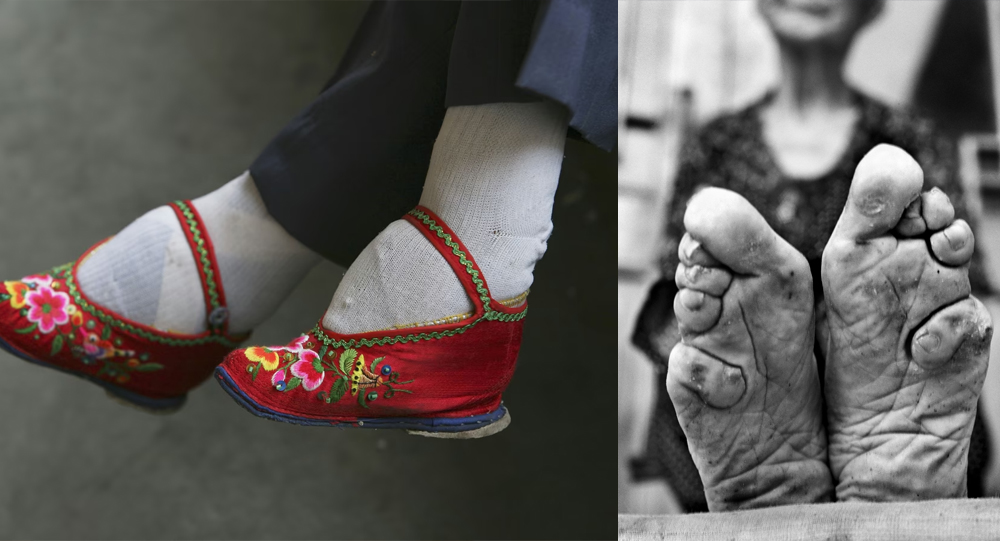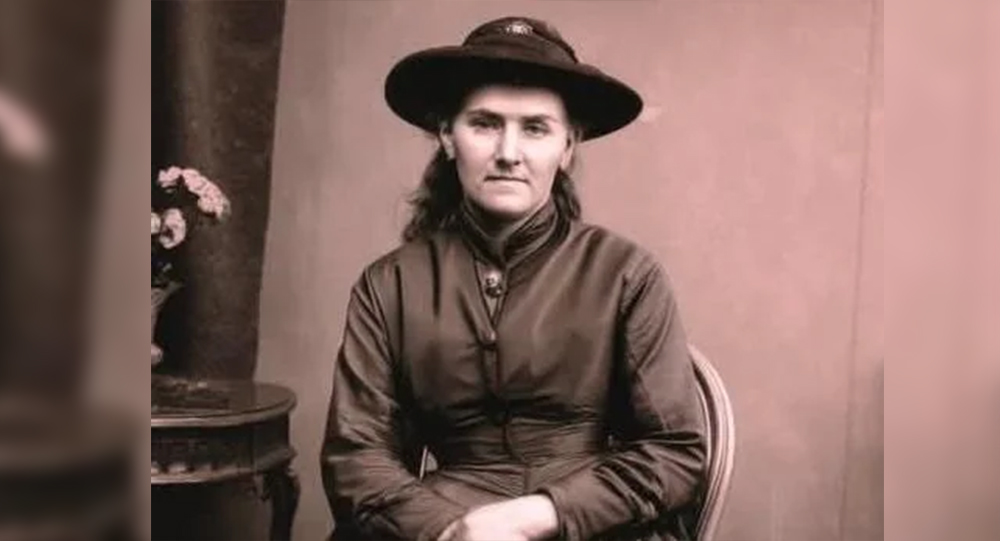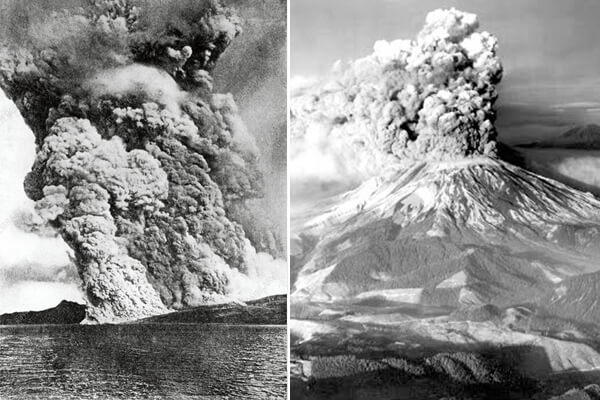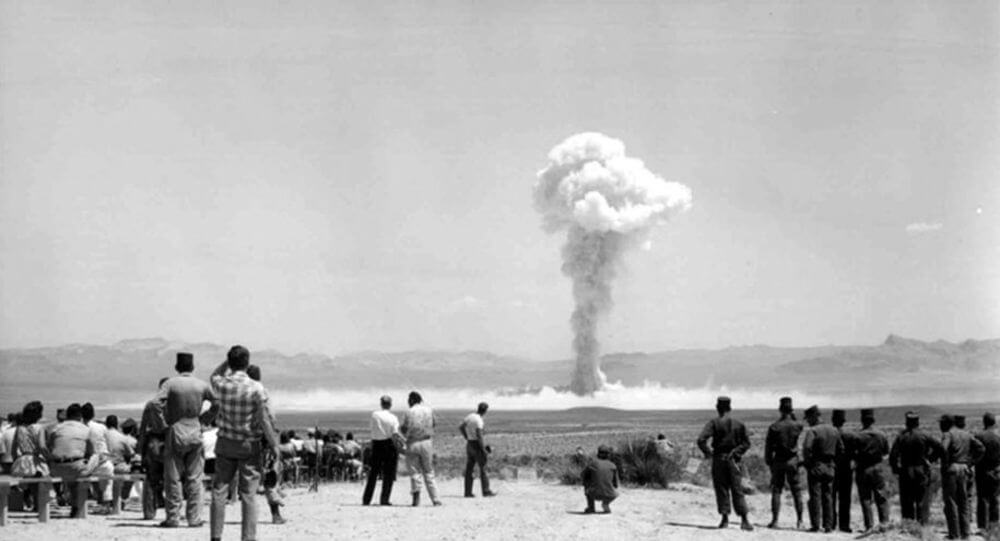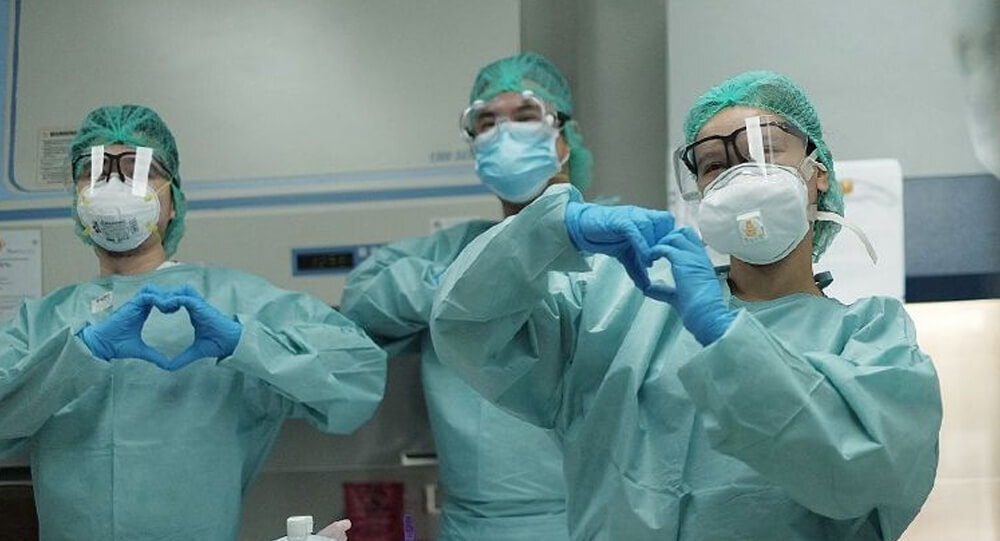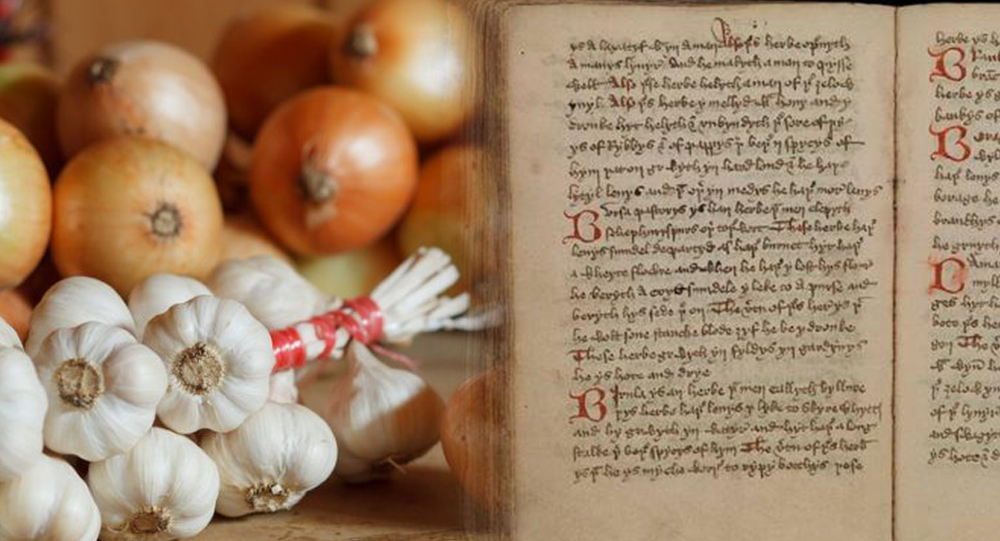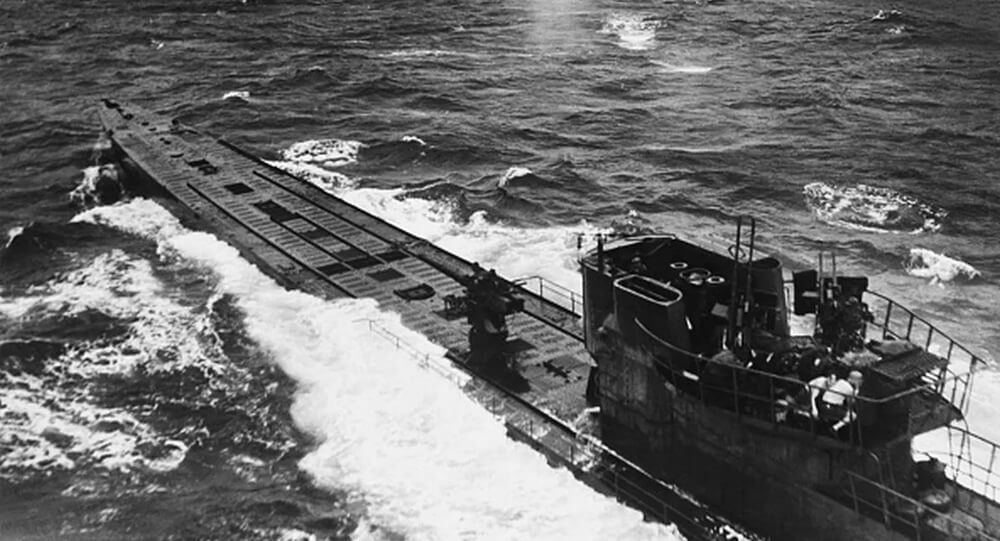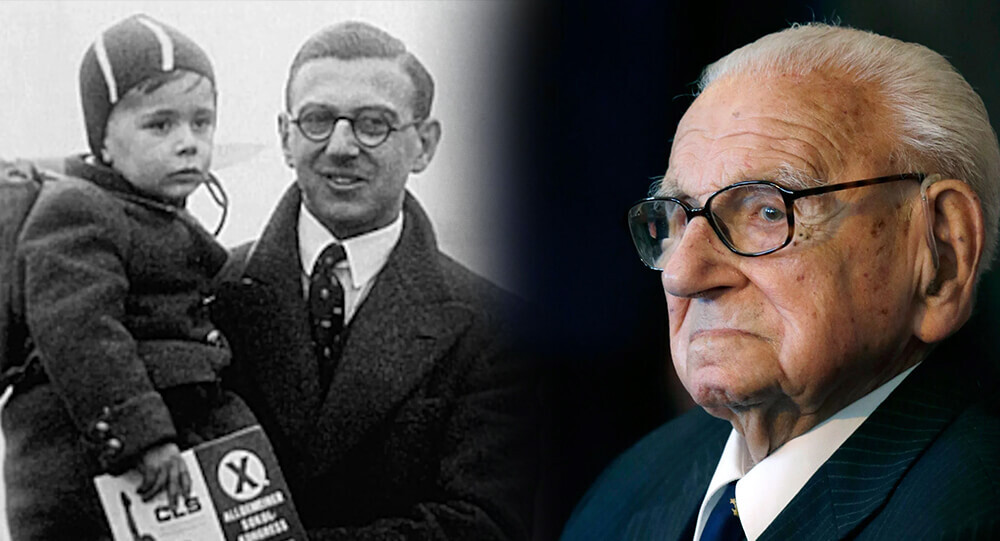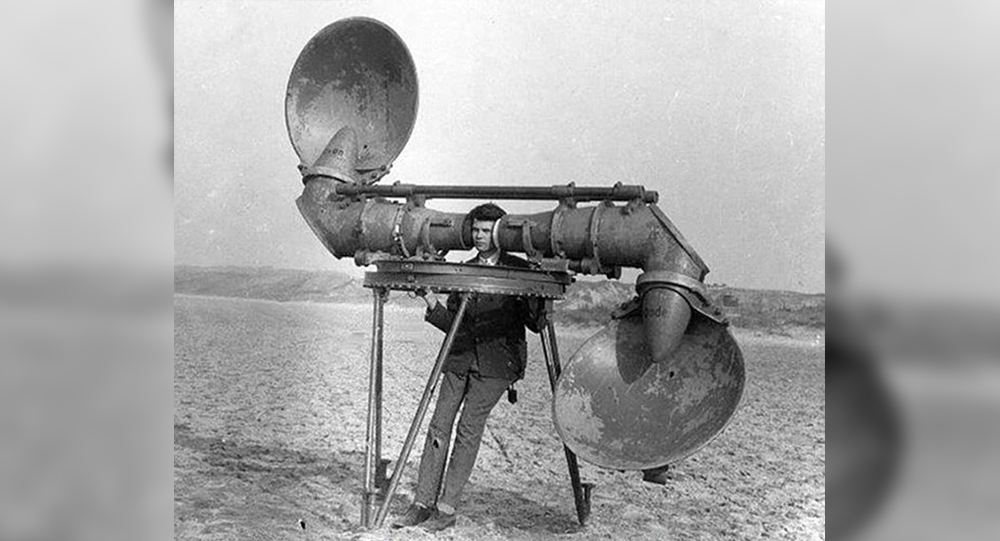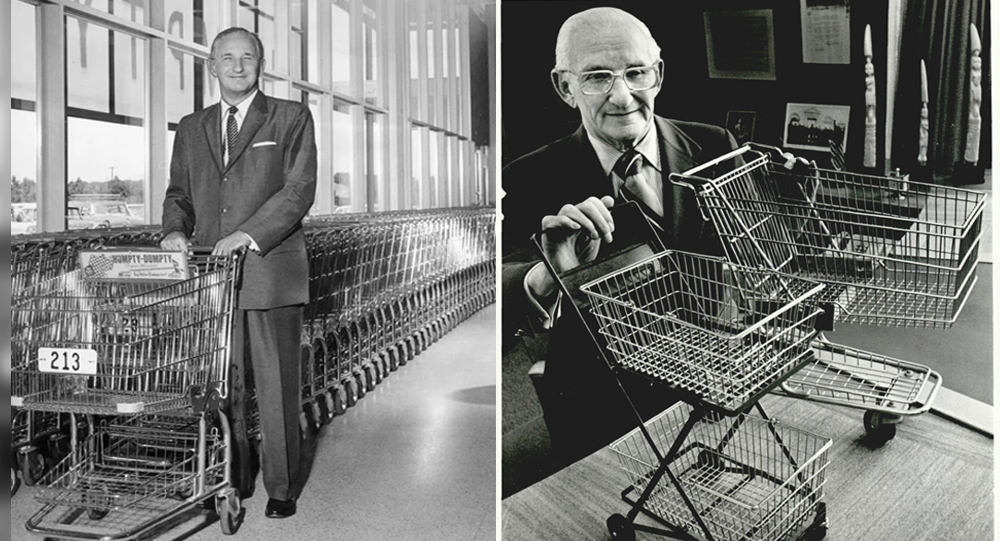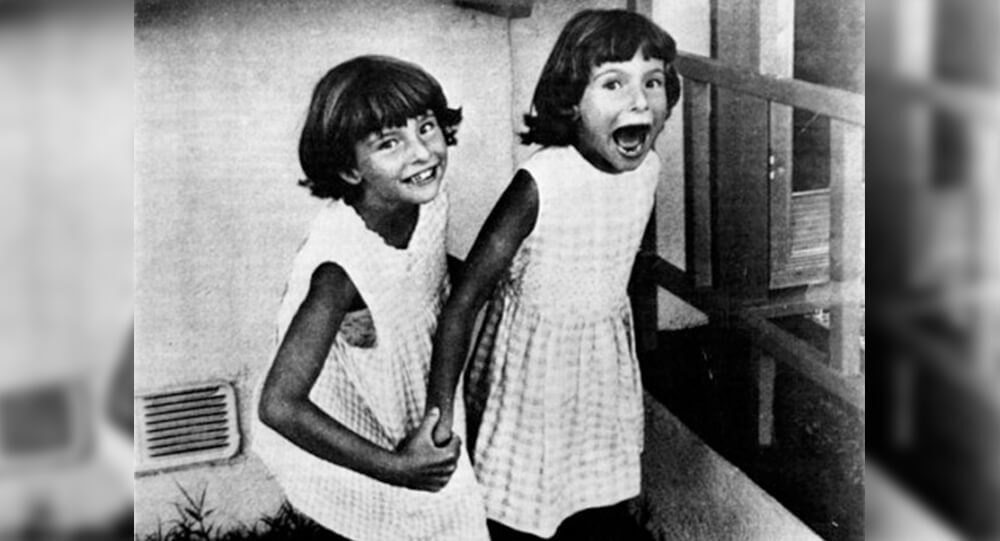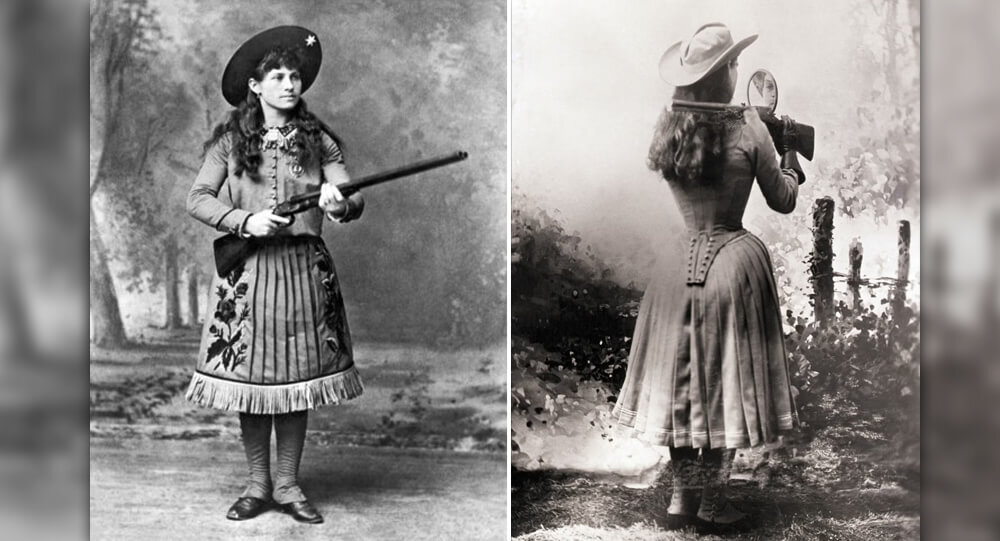

The true story of Annie Oakley, legendary sharpshooter
According to one 1887 book based on her life called The Rifle Queen, Annie Oakley was such a brilliant sharpshooter that she single-handedly thwarted train thefts, shot bears and panthers, and killed a wolf that already had her in its clutches.
Many untrue stories were sparked by Oakley’s reputation as one of the most accomplished gunslingers of her day. (The wolf story, for example, never happened.) Some of these myths live on today thanks to the 1946 Broadway musical “Annie Get Your Gun,” whose final scene depicts Oakley losing a match intentionally to protect her future husband’s ego—when in reality she won his heart by beating him in a shoot-out.
It’s challenging to distinguish fact from fiction in regards to Oakley’s life. Oakley spent 17 years showcasing her abilities on stages all around the world as the centerpiece of Buffalo Bill’s Wild West Show, a famed 19th-century act renowned for its romanticized portrayal of frontier life. She amazed audiences by ribbing playing cards in midair, shooting cigarettes from her husband’s lips, and—her signature trick—shooting a target behind her back while spotting it in a mirror.
The Wild West Show producers and her husband Frank Butler played a significant role in shaping Oakley’s reputation. However, some of Oakley’s own accounts as well as those of her ancestors still exist. The life of the sniper is told in this genuine account.
Early life
To begin with, Phoebe Ann Moses, who the family occasionally spelt Mozee, Mosey, or Mauzy, was the gunslinger’s actual name. She began using the stage name around the time she joined the Wild West Show in 1885.
Oakley was originally from Darke County, Ohio, not the Wild West, and she had a difficult beginning. Oakley had to work to support her family after her father passed away when she was five years old. In Bull’s-Eye: A Photobiography of Annie Oakley, published by National Geographic, Sue Macy notes that before picking up her father’s gun, Annie helped provide for the family by building traps to catch game.
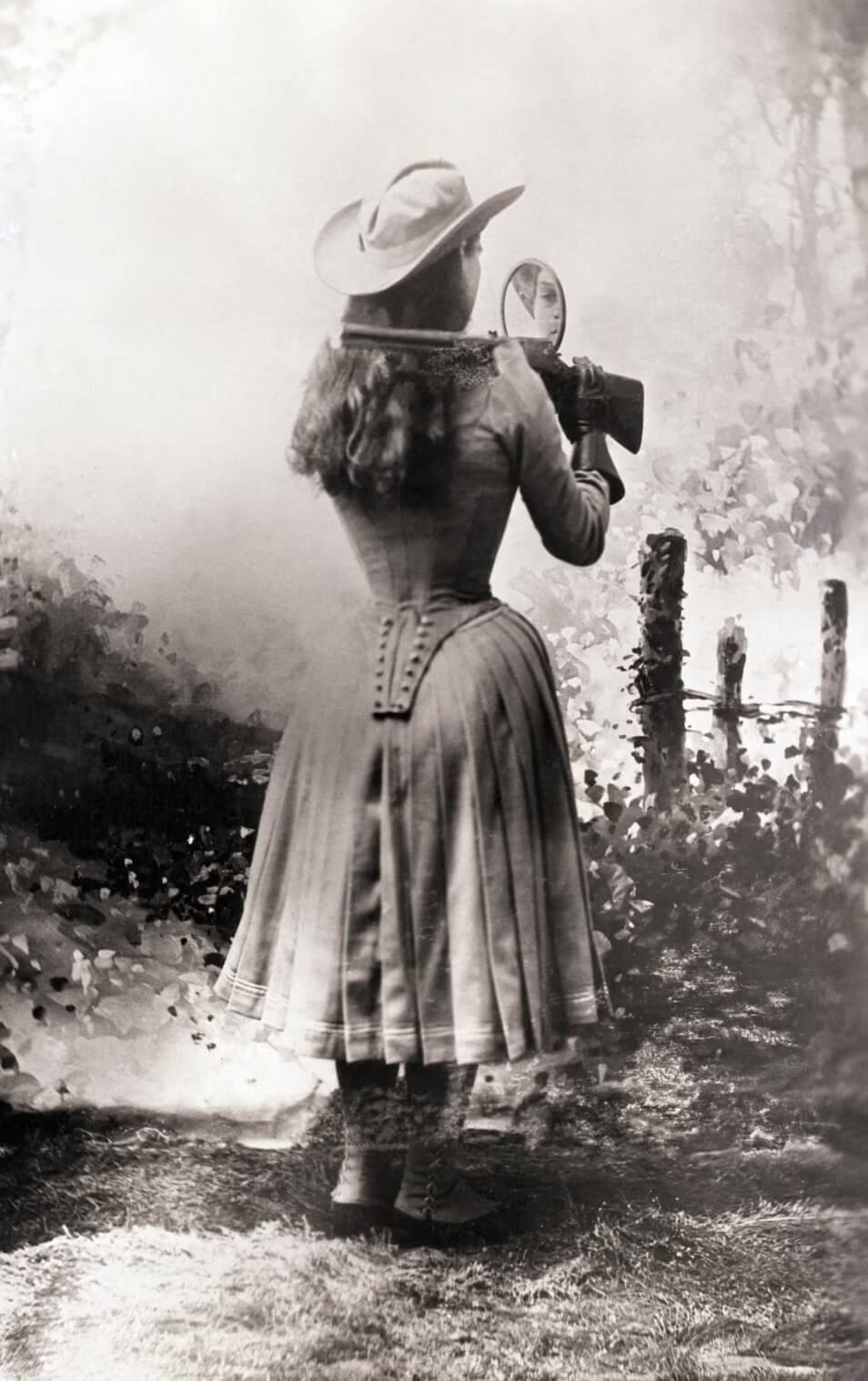
Even though details like the species of animal Annie killed have changed over time, Annie would frequently recount the tale of her first hunt. She was confident that she only needed to fire one shot to bring it down.
She once said, “I don’t know how I learned the skill,” according to Macy. I guess I was just born with it.
Once more tragedy occurred in 1870 with the passing of Oakley’s stepfather. Her mother struggled to support her family and sent several of her kids to live with neighbors. Oakley was taken in by a local farmer to assist care for his kids. He said she’d have time for hunting and study, but it gradually devolved into indentured slavery.
She eventually came home to her mother as an adolescent after succeeding in escaping. At that point, she began selling her kills on a regular basis to a nearby grocer and motels, making enough money to settle the mortgage on her mother’s home.
Her skill with a gun turned into a career, and in 1875 it even brought her together with fellow marksman Frank E. Butler. When Butler invited Oakley to a shooting competition, she was in Cincinnati visiting her sister at the time.
Butler’s final shot went over the line, giving Oakley the victory, but both Oakley and Butler struck every bird released from the trap. The two got hitched shortly after and started touring as a duo.
Buffalo Bill’s Wild West Show’s leading lady
Oakley and Butler joined Buffalo Bill’s Wild West Show in 1885, catapulting her to celebrity all over the world. At a shooting exercise, Butler launched clay pigeons into the air, and Oakley successfully hit every one of them.
Butler and Oakley travelled the country extensively with the Wild West Show organization. Buffalo Bill, or William F. Cody, produced the outdoor spectacular of the imaginary Wild West in 1883. It featured cowboys facing off against Indians in reenactments, shooting displays, and performances showcasing roping and horseback riding. (Cody would subsequently publicly denounce some of the negatively portraying Native Americans in the show.)
Oakley rapidly established herself as the show’s star after many spectators were astounded by the mix of her accurate shooting abilities and her small stature. She also attained fame abroad in 1887 when the troupe gave a performance at London’s Golden Jubilee for Queen Victoria.
The Queen and her son Edward, the Prince of Wales, attended the performance, which had Oakley as its featured performer. Reports of the meeting, in which the prince referred to Oakley as a “wonderful little girl,” support stories that Edward invited the shooter to his box after the performance.
Before returning to the Western show in 1889, Oakley and Butler soon ventured out to do private exhibitions for European nobility. In fact, despite some rumors to the contrary, Oakley shot a cigarette out of German Prince Wilhelm’s palm, not his mouth.
When Oakley was hurt in a railroad accident in 1901, the couple eventually abandoned the Western performance. Nevertheless, she kept making appearances at exhibitions up to her official retirement at age 53.
An all-female regiment of the U.S. Army
In addition to her legendary accuracy, Oakley was well known for her charitable and voluntary efforts. In the prologue of National Geographic’s photobiography, Bessie Edwards, Oakley’s great-grandniece and cofounder of the Annie Oakley Foundation, notes that Oakley gave time and money to tuberculosis patients, orphans, and young women pursuing higher education.
More than 15,000 women are believed to have been taught to shoot over the years through free workshops thanks to Oakley’s zeal for teaching them the sport and self-defense shooting techniques.
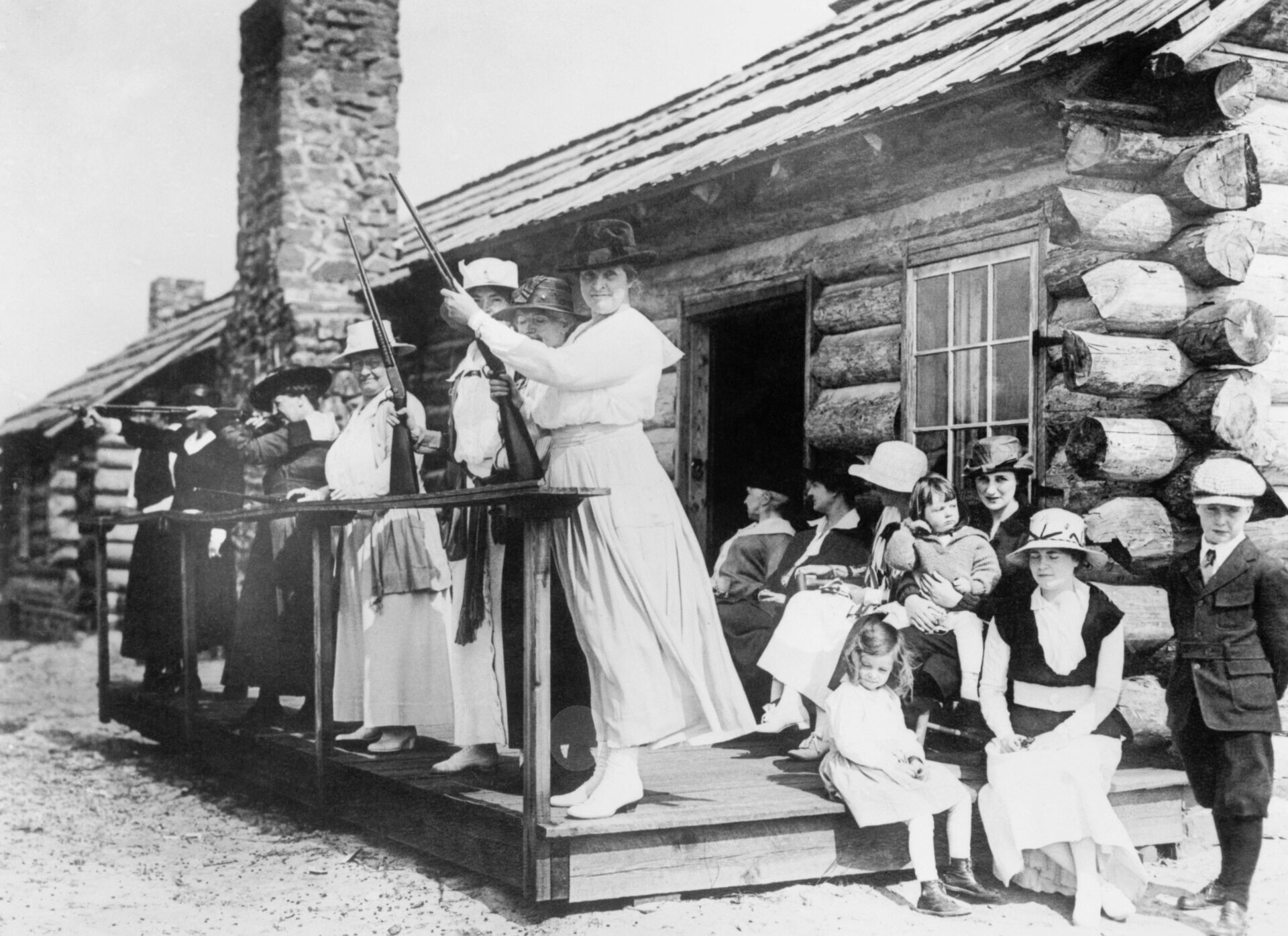
She reportedly previously wrote, “I think every woman should learn the use of firearms,” according to Macy. “I want every woman to be able to handle [firearms] as naturally as they handle children,” she said.
Prior to the start of the Spanish American War in 1898, she wrote to President William McKinley and offered to assemble a regiment of 50 American women sharpshooters, despite the fact that at the time, women were not permitted to join the armed forces of the United States. The War Department rejected her proposition.
In a letter to the Secretary of War in 1917, Oakley once more offered to train a women’s division as the United States entered World War I. “I can guarantee a regiment of women for home protection,” she said, “every one of whom can and will shoot if necessary.”
Although the secretary declined her offer, Oakley nevertheless contributed to the war effort by providing shooting demonstrations at U.S. Army postings. She even taught her dog, Dave, to find financial gifts for the Red Cross that were hidden and wrapped in handkerchiefs for the dog to find. As a result, Dave became known as Dave the Red Cross Dog.
Legacy
Soon after suffering a permanent leg injury in an automobile accident in 1922, Oakley was exploring changing directions in her career, such as becoming a cinema star or penning a memoir. However, her health quickly deteriorated. She was given a blood condition diagnosis in 1926 and passed away in Greenville, Ohio, at the age of 66. 18 days later, her husband, who had been spending the winter in North Carolina, passed away.
Despite contradictory accounts of her life, or possibly because of them, Oakley’s reputation has held up over time. With her likeness appearing in TV series, films, and musicals, her persistence and determination have inspired many people.
She reportedly responded, “Aim for the high mark and you will hit it.” “No, not the first, second, or perhaps third time. However, keep pointing and shooting because only practice will enable you to become perfect. At long last, you’ll achieve success.

The History Behind the “No One Dies Alone” Program
In 1986, while doing a night shift at the hospital, Sandra Clarke, a registered nurse, was asked by an elderly patient to stay. She promised to be back after checking on her other patients, but by the time she returned, the gentleman had passed away. Clarke became one of the key figures in launching No One Dies Alone, a program that allows volunteers to sit with terminal patients who have no one else.

The Forgotten Story of Semipalatinsk and the Soviet Nuclear Experiments
Between 1949 and 1989, the Semipalatinsk Test Site in Kazakhstan became the primary location for Soviet nuclear weapons tests, exposing millions of unsuspecting villagers to radioactive fallout. Known as the “Polygon of Suffering,” this remote desert witnessed 456 nuclear detonations that caused widespread health crises, birth defects, and generational genetic damage. This article narrates the chilling legacy of Semipalatinsk, unveiling the human cost of Cold War arms development and the ongoing struggle for healing and recognition in Kazakhstan.

Inside The Mysterious Death Of The Famed Gothic Writer Edgar Allan Poe
Hours before his death Edgar Allen Poe was found on the streets of Baltimore. He was incoherent, wearing another man’s clothes, and unable to explain how he got there. The cause of his death is an unsolved mystery.

Quaker Oats Fed Children with Radioactive Oatmeal
In the 1940s and 1950s, Quaker Oats and MIT conducted experiments on radioactive iron and calcium-containing cereal. The diet was part of a study to see if the nutrients in Quaker oatmeal traveled throughout the body. In January 1998, a $1.85 million settlement was reached for 30 victims who came forward.

Ancient Jericho: The First Walled City In History
The ancient city of Jericho is the world's oldest walled city, with evidence of stone fortifications dating back nearly 9000 years.

Inside China’s Footbinding Tradition: The Painful Ritual of Lotus Shoes and Bound Feet
In China, Lotus shoes were used to bind women's feet to keep their feet small

Why Comedians Failed to Make Sober Sue Laugh in the Early 1900s
In the bustling vaudeville scene of early 20th century New York, a mysterious performer known as "Sober Sue" captured public imagination not for jokes or songs, but for her unshakable stoicism—she never smiled or laughed. A local theater even offered a tempting reward of $1,000 to anyone who could make her laugh, drawing crowds and famous comedians eager to claim the prize. Despite countless hilarious attempts, Sue remained expressionless, a mystery that baffled performers and audiences until it was revealed that she suffered from facial paralysis, explaining her unchanging demeanor.

Thomas Baker's heroic act that earned him the "Medal of Honor" was 8 bullets until death
Thomas Baker instructed his team to leave him with a pistol and eight bullets propped up against a tree after he was injured. Later, American troops discovered the now-deceased Baker in the same location, lying next to eight dead Japanese soldiers and carrying an empty pistol.

Susanna Salter: The Trailblazing Story of America’s First Female Mayor
In 1887, Susanna Salter became the first female mayor in the United States, elected in Argonia, Kansas. Her nomination was initially a prank by men opposing women in politics. However, she won by a landslide and served effectively, inspiring the women’s suffrage movement and breaking barriers for women in leadership.

10 world’s most destructive and dangerous volcanic eruptions in history
Volcanic eruptions can devastate cities, change the world's atmosphere, and devastate economic systems. They can create molten lava rivers, mudslides, suffocating ash, and poisonous gases that cause chaos around the world for years. A volcanic explosion's effects can be massive, from its size to its death toll to its economic cost. Here is ten world’s most destructive and dangerous volcanic eruptions in history.

Tunnels Dug by ancient giant sloths, A South American Megafauna
For years, scientists didn’t know what caused mysterious cave networks in South America. In 2010, they learned that the caves were actually tunnels dug by ancient giant sloths

Atomic Tourism: In the 1950s, nuclear tests in Las Vegas served as a draw for tourists
Between 1950 and 1960, Las Vegas offered “Atomic Tourism” in which guests could watch atomic bombs being tested in the desert as a form of entertainment.

Philippines, the largest supplier of Nurses in the World
Philippines is the world’s largest supplier of nurses, supplying roughly 25% of all overseas nurses worldwide.

The unbroken seal on King Tutankhamun's tomb until 1922
The unbroken seal of Tutankhamun's tomb before it was opened in 1923, it was unbroken for over 3000 years.

The touching story of David Vetter (bubble boy), the 'boy who lived in a bubble
David Vetter lived his whole 12 years in sterile “bubble”. He was “outside” for 20 second after being removed from his mother’s womb. He never touched any human.

Medieval Medicine: A 1,000-year-old onion and garlic salve kills modern bacterial superbugs
Scientists recreated an Anglo-Saxon manuscript-based 9th century onion and garlic eye remedy and discovered that it killed 90% of antibiotic-resistant staph bacteria (MRSA).

Mother who spent entire life savings for daughter’s cancer treatment won the lottery
A mother won $2 million from a $10 scratch-off lottery ticket after she spent all of her entire life savings to pay her daughter’s cancer treatment. She bought the winning ticket after her daughter’s last cancer treatment.

The Amazing Truth About The German U-Boat That Was Sunk By A Toilet
During WWII, a German captain and an engineer flushed the submarine's high-tech toilet incorrectly, causing the vessel to rapidly fill with water. British planes patrolling the sea attacked them as the submarine was brought to the surface. While many members of the crew were killed in the attack, the captain escaped!

How Cleveland's Balloonfest in 1986 Turned Into a Public Tragedy
In Cleveland, Ohio, United Way broke the world record by deflating nearly 1.5 million balloons as part of a publicity stunt to raise money. The balloon obstructed a US Coast Guard search for two boaters who were subsequently discovered to have drowned, blocked airport runways, and blocked land and waterways.

The Horrific story of Ariel Castro and the Cleveland abduction
Cleveland abduction victims Gina DeJesus, Michelle Knight, and Amanda Berry were forced to live in Ariel Castro's house of horrors for 10 years. He raped and beat them until they escaped in 2013.

Nicholas Winton ‘British Schindler’: Man who rescued 669 Czech children from Nazis
A man named Nicholas Winton saved 669 kids during WWII and lived almost all his life without letting people know.

Before Radar: How Giant Acoustic Mirrors Detected Enemy Aircraft in WWI and WWII
Long before radar revolutionized air defense, enormous acoustic mirrors and specialized sound locators stood as the first line of defense against enemy aircraft. Designed as giant “ears,” these structures amplified distant engine noises, allowing operators to detect incoming planes by sound alone. Dive into the intriguing world of these pioneering listening devices, their operation, limitations, and enduring legacy in military history.

Nordlingen, The Town Inside A Meteorite Crater With Millions Of Meteorite Diamonds
The German town of Nördlingen is embedded with 72,000 tons of microscopic diamonds. About 15 million years ago, a meteorite hit this region, and the impact created a massive depression and formed rocks containing diamonds, glass, and crystals. The town was built in the impact crater sometime around 898 CE.

Sylvan Goldman: The Visionary Who Revolutionized Shopping with the Cart
The inventor of shopping carts, Sylvan Goldman, had to hire several male and female models to push carts around in his store, demonstrate their utility, and explain their use to other customers, due to not catching on initially.

Poto And Cabengo: The Secret Language Of Twins
Poto and Cabengo, as the two girls called each other, communicated in their own language. The twins were ignored by their parents and secluded from the outside world because their father felt they were developmentally retarded, and their unique language evolved as a result of that neglect.

